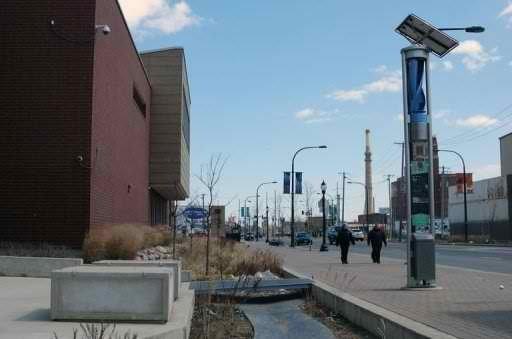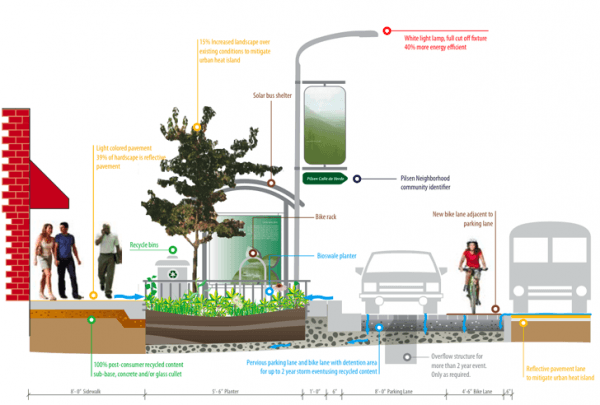In a city better known for turning its rivers bright green every March 17, a new title has been bestowed upon an unassuming little stretch of pavement in the industrial Pilsen section of Chicago. Two miles of West Cermak Road have been ceremoniously dubbed by the city as “the greenest street in America” for the long list of sustainable features lurking under and around the pavement.
While this is obviously just a little more wind from the Windy City (a million dirt roads anywhere in the world are far greener), the technology embedded in the $14 million stretch of pavement in front of Chicago’s Benito Juarez Community Academy looks promising enough to make a difference if it’s scaled up to an entire neighborhood.

First of all, the permeable pavement itself contains concrete created by Italcementi, the Italian manufacturer of “smog-eating cement,” which has been used on some buildings to resist discoloration. The cement contains titanium dioxide, which reacts with sunlight to speed up decomposition of any organic materials that build up on the surface. Tests have shown that the material actually helps clean the air as far away as eight feet from its surface.
The areas surrounding the pavement are equally impressive. On both sides of the street, bioswales have been added to absorb as much as 80 percent of storm water before it has a chance to overwhelm the sewer system. The drought-resistant trees, shrubs and grass in these bioswale belts are expected to withstand Chicago’s hot summers. They also consume CO2 and reduce the heat-island effect of paved surfaces.

Streetlamps are also lit by stored energy generated from a combination of solar panels and small windmills that are cleverly contained with slender energy kiosks sticking up from the sidewalks. Dedicated bicycle lanes have also been added to encourage non-polluting commuting. About 60 percent of the project’s construction waste was recycled and 23 percent of the new materials used contained recycled content.
According to the Chicago’s Office of Environment and Sustainability, the $14 million project cost 21 percent less than a traditional road resurfacing project and is expected to have fewer maintenance costs. The city said it is currently working on guidelines that may require many of these affordable green features to be included in all future road projects.